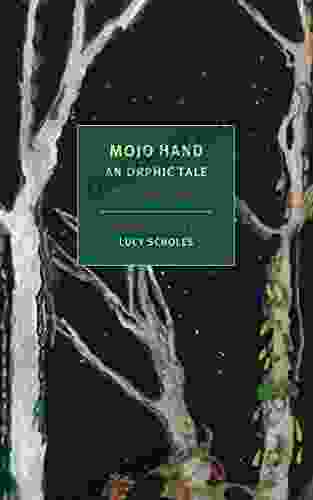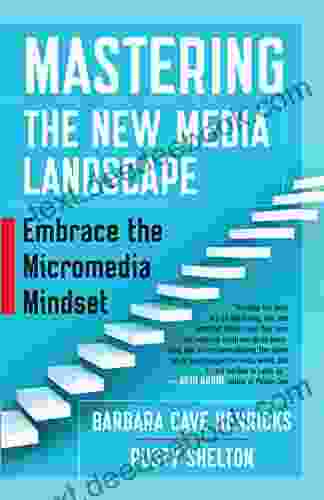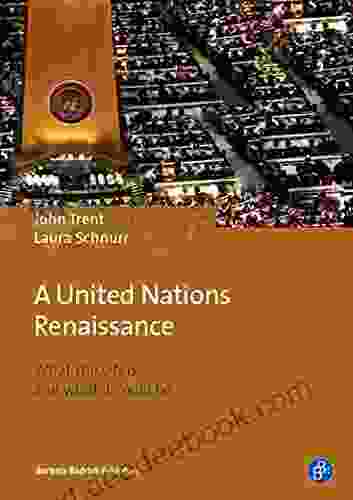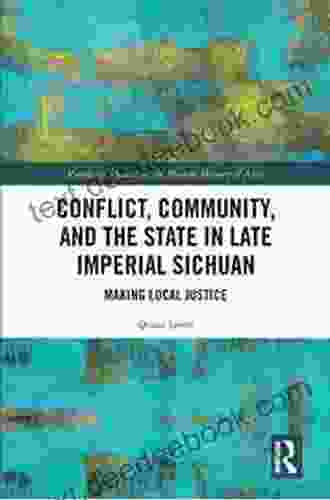Conflict, Community, and the State in Late Imperial Sichuan

Conflict was an endemic feature of Sichuan society in late imperial China. The province was home to a diverse population of ethnic groups, each with its own unique customs and traditions. These groups often competed for resources, such as land and water, and their conflicts could escalate into violence. In addition, Sichuan was a strategically important region, and it was often the target of invasion by outside forces. These invasions also led to conflict and bloodshed.
4.5 out of 5
| Language | : | English |
| File size | : | 1754 KB |
| Text-to-Speech | : | Enabled |
| Screen Reader | : | Supported |
| Enhanced typesetting | : | Enabled |
| Word Wise | : | Enabled |
| Print length | : | 166 pages |
The state played a complex role in managing conflict in Sichuan. On the one hand, the state attempted to suppress conflict and maintain order. On the other hand, the state also used conflict to its own advantage. For example, the state often used divide-and-rule tactics to pit different groups against each other and weaken their ability to resist state authority.
Communities also played a role in managing conflict. Communities often developed their own mechanisms for resolving disputes and mediating between different groups. These mechanisms helped to prevent conflict from escalating into violence and maintain social order.
The relationship between conflict, community, and the state in late imperial Sichuan was complex and dynamic. Conflict was a constant feature of Sichuan society, but it was also a force that could be used by both communities and the state to achieve their own goals.
Conflict and Community
Conflict was a major factor in shaping the social and political landscape of late imperial Sichuan. The province was home to a diverse population of ethnic groups, each with its own unique customs and traditions. These groups often competed for resources, such as land and water, and their conflicts could escalate into violence.
In addition to ethnic conflict, Sichuan was also plagued by social and economic conflict. The province was home to a large population of poor peasants, who often clashed with wealthy landowners over land rights and other issues. These conflicts could also lead to violence.
The state played a complex role in managing conflict in Sichuan. On the one hand, the state attempted to suppress conflict and maintain order. On the other hand, the state also used conflict to its own advantage. For example, the state often used divide-and-rule tactics to pit different groups against each other and weaken their ability to resist state authority.
Communities also played a role in managing conflict. Communities often developed their own mechanisms for resolving disputes and mediating between different groups. These mechanisms helped to prevent conflict from escalating into violence and maintain social order.
Conflict and the State
The state played a complex role in managing conflict in late imperial Sichuan. On the one hand, the state attempted to suppress conflict and maintain order. On the other hand, the state also used conflict to its own advantage.
The state's primary goal was to maintain order and stability. To this end, the state used a variety of methods to suppress conflict, including the use of force, the co-option of local elites, and the promotion of Confucian values.
However, the state also recognized that conflict could be a useful tool. For example, the state often used divide-and-rule tactics to pit different groups against each other and weaken their ability to resist state authority. The state also used conflict to justify its own actions, such as the use of force to suppress rebellions.
The state's relationship with conflict was therefore complex and contradictory. On the one hand, the state attempted to suppress conflict and maintain order. On the other hand, the state also used conflict to its own advantage.
Conflict was an endemic feature of Sichuan society in late imperial China. The province was home to a diverse population of ethnic groups, each with its own unique customs and traditions. These groups often competed for resources, such as land and water, and their conflicts could escalate into violence. In addition, Sichuan was a strategically important region, and it was often the target of invasion by outside forces. These invasions also led to conflict and bloodshed.
The state played a complex role in managing conflict in Sichuan. On the one hand, the state attempted to suppress conflict and maintain order. On the other hand, the state also used conflict to its own advantage. For example, the state often used divide-and-rule tactics to pit different groups against each other and weaken their ability to resist state authority.
Communities also played a role in managing conflict. Communities often developed their own mechanisms for resolving disputes and mediating between different groups. These mechanisms helped to prevent conflict from escalating into violence and maintain social order.
The relationship between conflict, community, and the state in late imperial Sichuan was complex and dynamic. Conflict was a constant feature of Sichuan society, but it was also a force that could be used by both communities and the state to achieve their own goals.
4.5 out of 5
| Language | : | English |
| File size | : | 1754 KB |
| Text-to-Speech | : | Enabled |
| Screen Reader | : | Supported |
| Enhanced typesetting | : | Enabled |
| Word Wise | : | Enabled |
| Print length | : | 166 pages |
Do you want to contribute by writing guest posts on this blog?
Please contact us and send us a resume of previous articles that you have written.
 Chapter
Chapter Story
Story Genre
Genre Paperback
Paperback E-book
E-book Newspaper
Newspaper Sentence
Sentence Bookmark
Bookmark Shelf
Shelf Glossary
Glossary Bibliography
Bibliography Preface
Preface Annotation
Annotation Manuscript
Manuscript Scroll
Scroll Tome
Tome Narrative
Narrative Biography
Biography Autobiography
Autobiography Memoir
Memoir Dictionary
Dictionary Thesaurus
Thesaurus Character
Character Librarian
Librarian Catalog
Catalog Stacks
Stacks Archives
Archives Periodicals
Periodicals Study
Study Academic
Academic Journals
Journals Reading Room
Reading Room Special Collections
Special Collections Study Group
Study Group Thesis
Thesis Dissertation
Dissertation Awards
Awards Reading List
Reading List Theory
Theory Textbooks
Textbooks Helen Phifer
Helen Phifer Jason Mcdonald
Jason Mcdonald Judy Carey Nevin
Judy Carey Nevin Richard L Oliver
Richard L Oliver Nick Harlow
Nick Harlow Toni Adejumo
Toni Adejumo Mike Tapia
Mike Tapia Martin E Connor
Martin E Connor Delores Fossen
Delores Fossen Richard Everett
Richard Everett Laura V Coulter
Laura V Coulter Jane Kenyon
Jane Kenyon Michael Essany
Michael Essany James Lucas
James Lucas Munir Moon
Munir Moon Daniel Ankele
Daniel Ankele Duncan Bhaskaran Brown
Duncan Bhaskaran Brown Tessa Karina Tews
Tessa Karina Tews Timothy Ross
Timothy Ross Gary D Borich
Gary D Borich
Light bulbAdvertise smarter! Our strategic ad space ensures maximum exposure. Reserve your spot today!

 W.B. YeatsCourse For Secondary Schools In The Caribbean Third Edition: A Comprehensive...
W.B. YeatsCourse For Secondary Schools In The Caribbean Third Edition: A Comprehensive...
 Tyrone PowellMojo Hand: An Orphic Tale - A Voyage into the Heart of Music, Mystery, and...
Tyrone PowellMojo Hand: An Orphic Tale - A Voyage into the Heart of Music, Mystery, and...
 Anthony BurgessMastering the New Media Landscape: A Comprehensive Guide to Navigating the...
Anthony BurgessMastering the New Media Landscape: A Comprehensive Guide to Navigating the... Stephen KingFollow ·3.3k
Stephen KingFollow ·3.3k Bo CoxFollow ·14.3k
Bo CoxFollow ·14.3k Houston PowellFollow ·4.9k
Houston PowellFollow ·4.9k George BellFollow ·6.8k
George BellFollow ·6.8k Floyd RichardsonFollow ·14.2k
Floyd RichardsonFollow ·14.2k Edwin CoxFollow ·15.2k
Edwin CoxFollow ·15.2k Branden SimmonsFollow ·4.4k
Branden SimmonsFollow ·4.4k Albert ReedFollow ·8.1k
Albert ReedFollow ·8.1k

 Jack Powell
Jack PowellThe United Nations Renaissance: A New Era of Global...
The United Nations was founded in 1945 in...

 Banana Yoshimoto
Banana YoshimotoMastering the Art of Critical Analysis: A Comprehensive...
Ida B. Wells-Barnett, a...

 Brian West
Brian WestWhat You Need To Know About The Inner Lives Of Men:...
Understanding the...
4.5 out of 5
| Language | : | English |
| File size | : | 1754 KB |
| Text-to-Speech | : | Enabled |
| Screen Reader | : | Supported |
| Enhanced typesetting | : | Enabled |
| Word Wise | : | Enabled |
| Print length | : | 166 pages |












